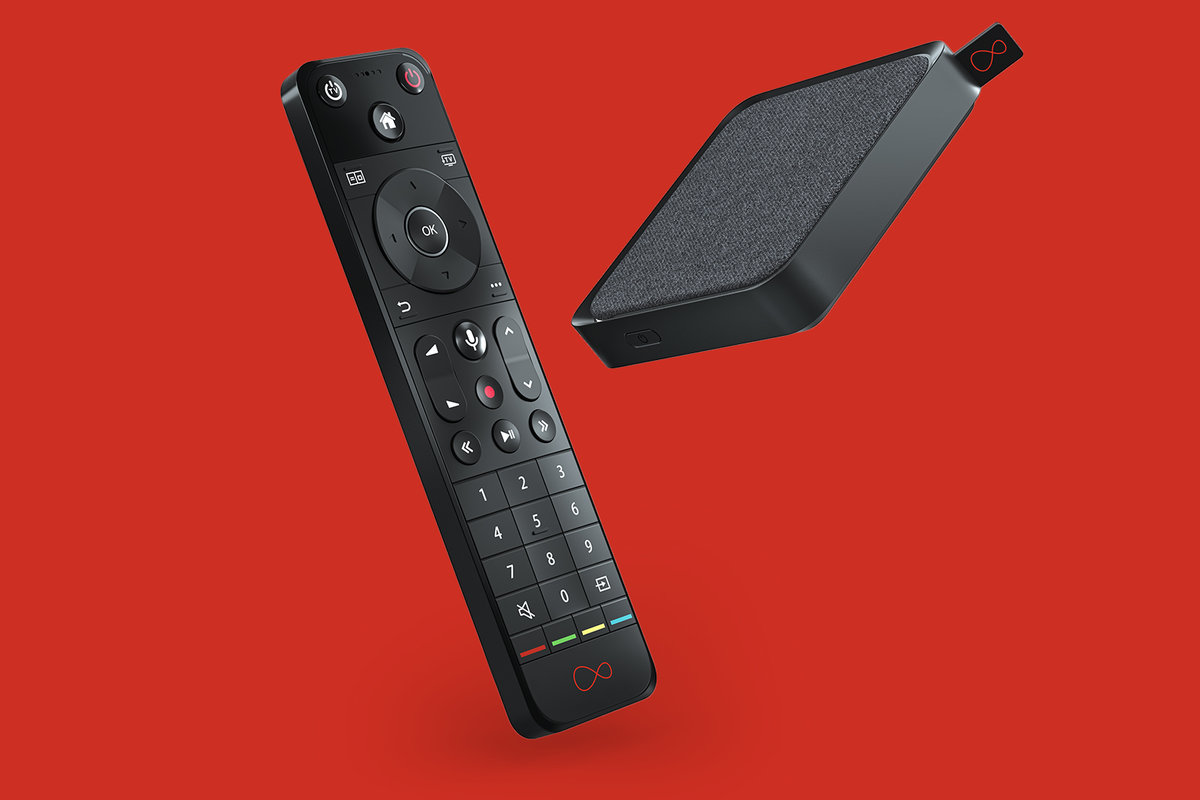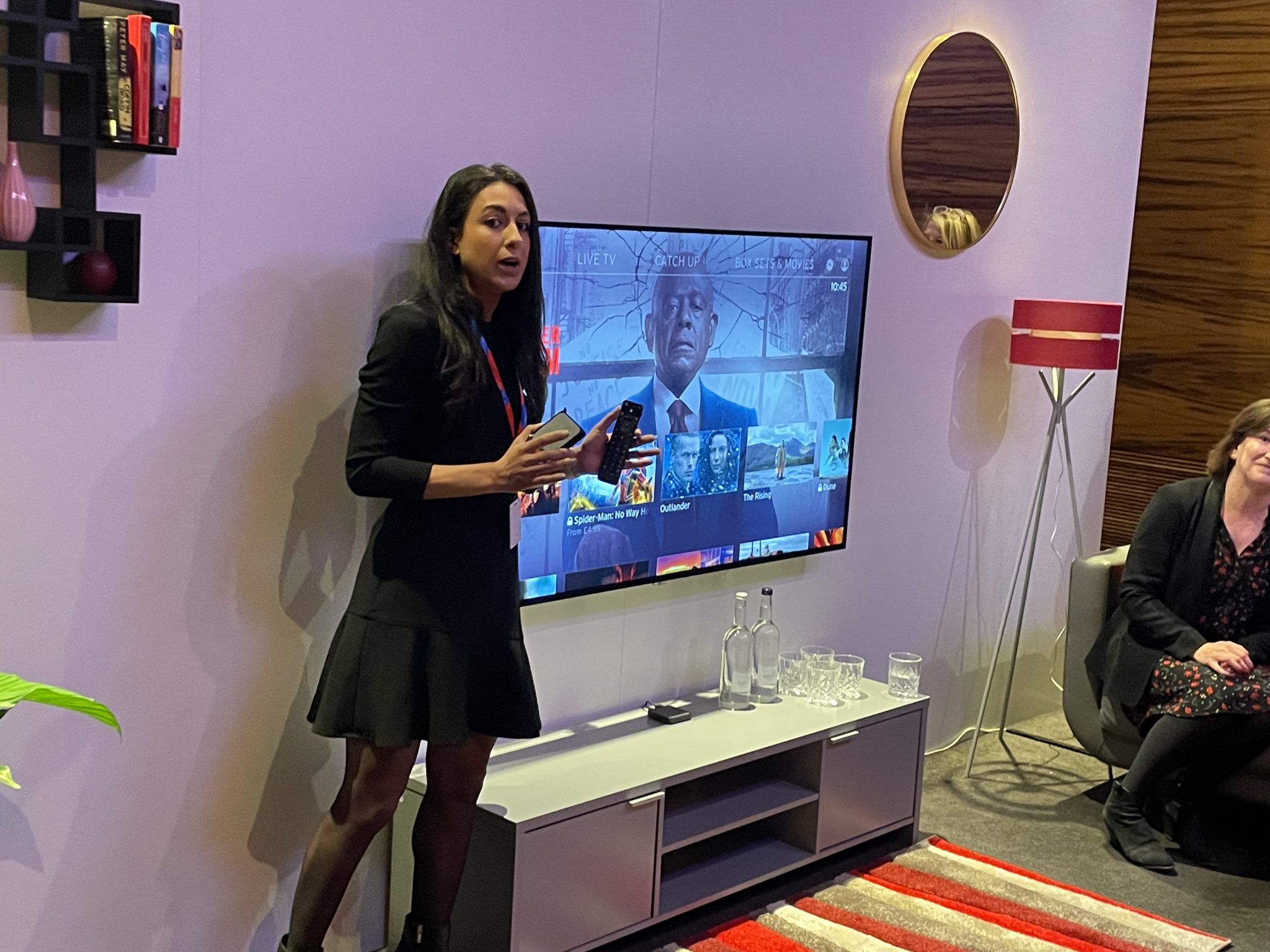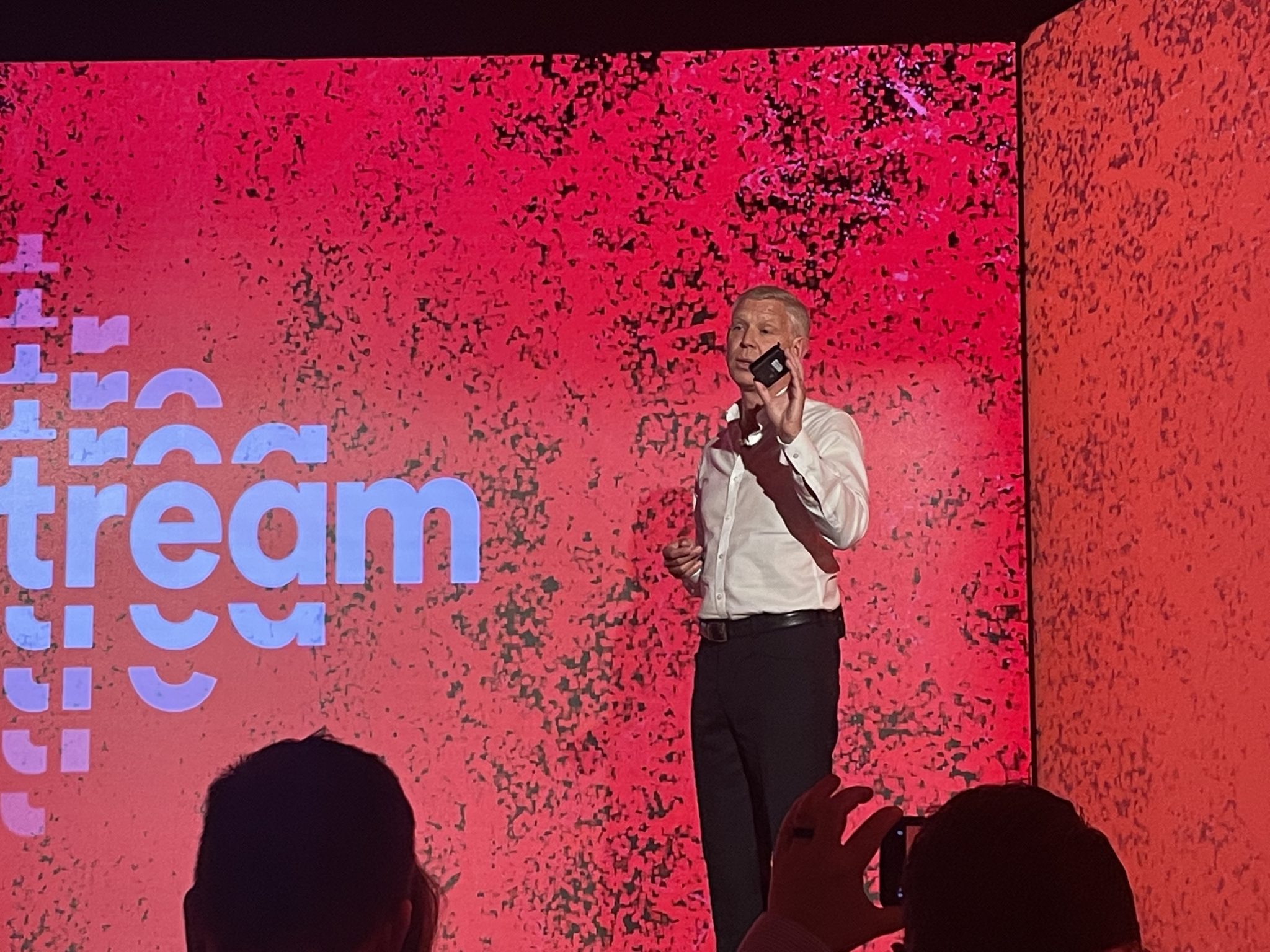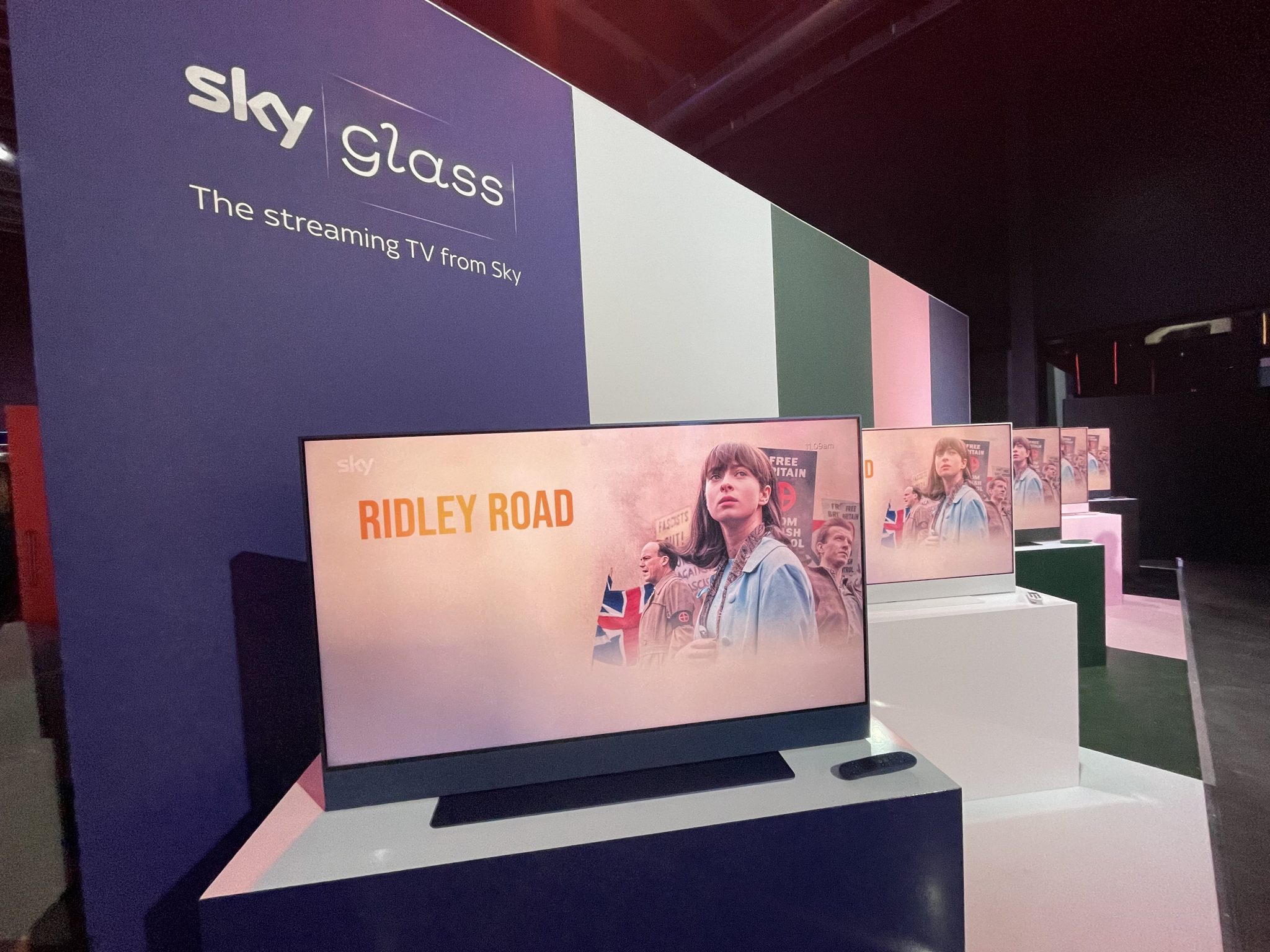
After more than 40 years of operation, DTVE is closing its doors and our website will no longer be updated daily. Thank you for all of your support.
Virgin Media swims upstream

Digital TV Europe was in attendance this week when Virgin Media O2 made its big play to close the gap between traditional TV evangelists, cord-cutters and cord-nevers.
The petite Virgin Stream is certainly a handsome device at first glance. It combines the low-cost portability of similar devices from the likes of Amazon and Roku, with the full breadth of traditional pay TV offered by the UK’s second-largest operator.
Stream is available to Virgin Broadband subscribers for an upfront activation fee of £35, with users paying for channel packages and SVODs directly through the platform. Subsequently, any customer taking Stream can get 10% credit back on the subscriptions they add, offering added incentive to centralise memberships.
A Stream subscription is also set up on a month-by-month basis, with users able to chop and change packages at will, even to the stage where a user could theoretically use free streaming services and freeview channels for the total sum of £0 per month.
Perhaps the most impressive part of the display was Virgin O2 COO Jeff Dodds’s triumphant declaration that the product would be available a mere 24 hours after its initial reveal in Central London.
If you think that statement is damning with faint praise then you wouldn’t be mistaken. We’ll dive into more detail below, but the upfront conclusion at launch is that Virgin Stream is a largely undercooked product at launch that seems rushed out the door in order to beat the competition.
Single room slowdown
Ever since Sky launched its first multiroom STB offering in the mid-00s, the ability to add extra boxes for around the house has been a default. This is not the case for Stream.
Trying (and failing) to spin Stream’s size in its favour, the company at the Stream launch event pushed the device’s small form factor as a selling point. However, this was transparently an attempt to cover over the simple fact that in 2022, Virgin Media O2 is releasing a premium TV set top box where you can only have one in the house.
A spokesperson for the company confirmed to DTVE that this is the case at launch, but was unable to provide assurances that this will be an issue rectified in the future.
This may seem like an odd nitpick for me to launch into initially, but this oversight is an indication of Virgin’s overall approach to Stream which, as mentioned, feels rushed.
Sure, Stream is a handheld device that would be relatively easy to move from room to room, but do you know what is easier than moving something from room to room? Not having to do it at all. This is something that Sky offers with Sky Q and its linked puck devices, with up to four video feeds being viewable at once.
Writing as a solo resident of a flat with one television I am the ideal case for Stream, but in the grand scheme of the UK market I am largely the exception to the rule of house shares and family domiciles.
But even as arguably the target audience (Virgin is pushing the message that Stream is ‘Streaming for the TV generation and TV for the streaming generation’) there are enough other factors that would deter me from popping in my canal and jumping in the Stream.
Muddled business approach
As you may have garnered from my tone here and previous columns, I am decidedly on the younger end of the industry spectrum – certainly in regards to my video consumption.
Dear reader, I will confess to you that, as the deputy editor of Digital TV Europe, I do not own a TV licence. In fact, I don’t even own an aerial. While I grew up in a pay TV household, my own consumption habits today are solely based around streaming services, whether they are paid-for SVODs like Netflix and Disney+ or free platforms like YouTube. I consume video on my TV via an Android-powered Nvidia Shield TV device, and casually watch things on my smartphone because I cannot take the deafening silence of brushing my teeth to dead air.
 So I am, as Virgin would define, the ‘streaming generation’ that it is trying to push towards TV.
So I am, as Virgin would define, the ‘streaming generation’ that it is trying to push towards TV.
Aside from the fact that Stream requires a Virgin Broadband setup – one of the more expensive broadband providers for a generation most impacted by the cost-of-living crisis – the realities of the Stream account management system once again seems ill thought out.
On paper, it sounds great. In a fashion similar to Amazon and Apple with their respective channel setups, users can see all their streaming and linear packages within one centralised management system, all accessible with one login. And you get an overall 10% discount just for doing everything in this way. What could be better?
In practice though this is not nearly as clean a process as one might hope for. While streaming accounts can be managed through the Virgin Stream setup, this only applies to those created through the platform. This means that existing Netflix, Disney+ and BritBox (the only SVODs supported by Stream) subscribers will have to cancel their existing accounts – deleting their profiles, watch history and saved playlists – and start new ones via this system in order to benefit from a relatively slim discount. Prime Video is also accessible via Stream, but Prime memberships cannot be managed through its account system.
There will be some frugal consumers willing to do this, but for many the hassle will not be considered worth it.
Users may also be deterred by a relatively light app catalogue – with Apple TV+, discovery+ and UKTV Player being notable absentees – and the lack of common smart TV features like the ability to cast video from a smartphone.
Sky’s the limit
Overall, there was a strangely spiteful tone to Virgin’s presentation of Stream. With every moment of praise towards the new product and the hundreds of staff who worked on it, came comments that attempted to get digs in at the company’s biggest competitor.
Both COO Jeff Dodds and chief TV and entertainment officer David Bouchier both made comments not-so-subtly deriding Comcast-owned Sky and its flagship Sky Glass smart TV line (about which I produced a similarly incoherent stream of consciousness several months ago).
Dodds said that Virgin is “not going to try to sell you a new TV”, while Bouchier said: “We don’t believe we have to become a TV manufacturer [to deliver a cutting edge product].”
Sky Glass has been derided for technical teething problems and specs which don’t fare well when compared to similarly priced smart TVs from the likes of Samsung and LG, but it’s hard to argue that it is not at least ambitious.
Meanwhile Virgin’s attention seems to have been split between being a modern aggregation platform but only doing so if it can beat Sky to the punch. Sky earlier this month revealed that it will launch a streaming-only product in the UK later this year, following its successful deployment in Germany.
Bouchier boasted that Stream is “the UK’s first IPTV first broadcast platform integrated with the major streamers,” but that lustre may wear off when Sky bursts onto the stage with its IPTV STB in H2. Virgin’s actions may lead Sky to be more aggressive with its account setups (i.e. not tying customers into long-term contracts) but that is a discussion best saved for the future.
But in reality right now, Virgin Stream’s biggest competitor is not Sky Q or Sky Glass, but streaming devices from US tech giants that arguably do a lot more with more open and flexible platforms. (This is all without mentioning the fact that an increasing focus on cloud gaming is fast transforming platforms like Android TV into miniature consoles capable of console-quality gaming.) There are benefits to Stream, but there are enough pitfalls at launch to hold off on recommending it to someone in the market for an IPTV device.




